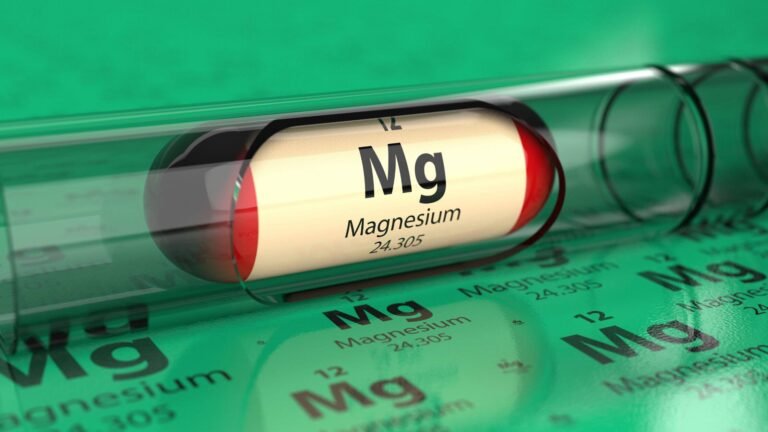What Happens if You Are Fasting for 3 Days (Backed by Science)

After you eat a meal, food is broken down into simpler molecules and used as fuel so that your body can function properly. An organ in the abdomen, known as the pancreas, produces insulin, which is a hormone that helps your cells absorb the glucose found in the bloodstream after a meal.
Dietary fat, on the other hand, is broken down into fatty acids, which are then utilized by the body for energy, as well as for various other biological processes such as testosterone production. For instance, any excess fatty acids are converted back to triglycerides. Most of these triglycerides are then stored in adipose tissue, also known as body fat.
Similarly, excess carbohydrates from the meal are initially converted into glycogen, a chain of glucose molecules that can be stored and used later on. Glycogen is predominantly stored in the liver and muscles, as there is a biological limit to how much glycogen a person can store.
Once this limit is reached, the remaining energy is converted into triglycerides and stored as adipose tissue. This is the routine process that our bodies go through when we eat throughout the day.
But what would happen if you were to totally Fasting for 3 Days ?
Following a fasting period of about 6 to 10 hours, the majority of residual glucose present in the bloodstream would be utilized as an energy source. With the absence of incoming nutrients, the body would tap into its glycogen reserves to sustain its metabolic needs.
At this juncture, the pancreas initiates the secretion of glucagon, a hormone distinct from glycogen and glucose. Among its various functions, glucagon acts as a signaling molecule, prompting the release of glycogen and fatty acids into the circulation.
Furthermore, in instances where the preceding meal was deficient in carbohydrates, the body may commence the production of ketones as an alternative fuel source during the early stages of fasting. Ketones, generated by the liver through the conversion of adipose tissue into fatty acids, assume a vital role in energy metabolism.
During the initial six hours of fasting, blood glucose levels exhibit an incremental rise followed by a gradual decline. Conversely, ketone levels display an upward trajectory, particularly after approximately ten hours of fasting. Individuals accustomed to the consumption of three regular meals per day or those adhering to a high-carbohydrate diet may experience sensations of hunger and reduced energy levels.
It is important to note that the sensation of hunger is not solely attributable to caloric insufficiency but is intricately linked to the body’s circadian rhythm. The body establishes a habitual pattern and anticipates sustenance at specific times of the day when meals are typically consumed, such as breakfast, lunch, and dinner.
This physiological response is mediated by the hunger hormone ghrelin, which elicits appetite stimulation upon release. Thus, when food intake is interrupted, scientific investigations reveal an automatic surge in ghrelin levels during habitual meal times, engendering a sensation of hunger. However, should the fasting persists, these hunger pangs tend to subside after approximately two hours, allowing the body to gradually adapt to a revised meal frequency over time.
Human Growth Hormone (HGH)
Following a minimum fasting duration of 10 hours, the body initiates an increase in the production of human growth hormone (HGH), a hormone synthesized by the pituitary gland. Fasting induces a substantial elevation of HGH levels, comparable to the effects of exercise stress or hypoglycemia.
HGH assumes a crucial role in the fasting process as it is associated with various benefits, including enhanced muscle repair, improved exercise performance, strengthened immunity, and expedited recovery from injuries. While fasting alone is unlikely to promote muscle growth in the absence of nutrient intake, HGH is believed to contribute to the preservation of muscle mass during fasting.
This is achieved through the stimulation of metabolic processes such as protein synthesis and muscle tissue repair. Notably, research indicates that the duration of fasting directly influences HGH production, with a study demonstrating a five-fold increase in HGH levels after just two days of fasting.
Approximately 12 to 16 hours into the fasting period, glycogen stores continue to deplete, and the body increasingly relies on ketone bodies as an energy source. During this phase, a decrease in body temperature may be experienced, attributed to the absence of food digestion. The benefits of this initial fasting period have been extensively studied by observing individuals during the month-long Muslim holiday of Ramadan, wherein fasting occurs from dawn to sunset daily.
These investigations provide valuable insights into the advantages of fasting for 10 to 17 hours per day on the human body. Findings reveal significant improvements in weight management, digestion, and cholesterol levels. Moreover, studies highlight a noteworthy reduction in inflammation markers associated with various diseases, such as homocysteine, C-reactive protein (CRP), and the total cholesterol to HDL ratio. Lowering inflammation throughout the body is a desirable goal for many individuals, and relatively short-term fasting can effectively contribute to its mitigation.
Neurology and Autophagy
As the fasting period progresses, typically around 18 hours, the body increasingly relies on fatty acids, while ketone production accelerates due to low blood sugar levels. With limited glycogen reserves available in the liver and muscles, inflammation decreases significantly.
This stage also witnesses a substantial surge in human growth hormone (HGH) and brain-derived neurotrophic factor (BDNF). Both HGH and BDNF play pivotal roles in promoting the growth of new neurons and synapses in the brain, facilitating improved communication among nerves, sensory organs, and cognitive processes. Moreover, BDNF aids in the preservation of existing brain neurons, ultimately enhancing learning and memory capacity. This cognitive enhancement typically occurs after 16 to 18 hours of fasting.
Simultaneously, a vital process called autophagy is initiated during this fasting phase. Autophagy serves as an auto-recycling mechanism wherein the body efficiently clears out cellular debris, ranging from damaged proteins to dysfunctional cells and even harmful bacteria. These waste materials are utilized as an energy source, effectively rejuvenating the body and acting as a profound cleansing mechanism.
Interestingly, autophagy is known to be influenced by various factors, including caloric restriction, starvation, elevated levels of HGH, and increased BDNF. Remarkably, fasting encompasses all three conditions, making it a highly effective method for triggering the autophagy process. Furthermore, autophagy not only represents a genuine form of detoxification but also holds therapeutic potential for extending lifespan and combating the aging process.
Immune Function and Metabolic Adaptations
Short-term fasting has been shown to enhance the immune system’s ability to combat diseases, leading to improved overall immunity. However, extended fasting periods of a week or longer can have detrimental effects on the immune system due to malnutrition.
Within 24 to 32 hours of fasting, glycogen stores are likely depleted, prompting the body to rely solely on its own fat reserves for energy. Consequently, a notable increase in circulating free fatty acid concentration occurs, particularly more pronounced in men compared to women.
While various organs, including the brain, still require glucose to function optimally, the body employs ingenious mechanisms to fulfill this need. Triglycerides derived from fat sources are split into glycerol and free fatty acids.
The free fatty acids are readily utilized for energy, while the glycerol undergoes conversion into glucose through gluconeogenesis, primarily taking place in the liver. This newly synthesized glucose can then supply the brain with the necessary fuel, thus preserving muscle tissue and preventing its breakdown.
Short-term fasting positively impacts immune function, bolstering the body’s disease-fighting capabilities. During this period, the body transitions to utilize its fat stores for energy, increasing free fatty acid circulation. While glucose remains vital for specific organs, the body adeptly generates glucose through gluconeogenesis, ensuring the brain’s energy requirements are met without sacrificing muscle tissue.
Fasting and Muscle Preservation.
Contrary to common belief, the body undergoes a substantial reduction in protein breakdown rates as early as 24 hours into fasting, actively working to preserve muscle mass. Recent studies support this finding.
However, it is important to note that extended fasting periods can lead to muscle loss, particularly in individuals with relatively low body fat. In such cases, the body is more prone to converting protein into glucose through gluconeogenesis.
Nevertheless, concerns regarding muscle loss should not be a primary worry until approximately after the initial three days of fasting. During this period, the body primarily relies on stored body fat to meet its energy and glucose requirements.
The upsurge in human growth hormone (HGH) production, triggered as an anti-starvation response, plays a significant role in this process. HGH not only facilitates fat loss but also aids in preserving muscle mass during the initial stages of fasting. Consequently, the absence of food intake after the first 24 to 32 hours does not immediately result in muscle breakdown.
Additionally, weight loss reflected on the scale during fasting is predominantly attributed to the depletion of carbohydrates and subsequent water loss, as well as some fat loss. It is crucial to recognize that this fat loss is not permanent, as rapid weight regain can occur by overindulging in food during the subsequent meal.
Continuing the fasting journey for 48 hours provides additional benefits beyond weight loss. Improved mood, enhanced mental clarity, and heightened focus are among the reported advantages. However, it is important to approach fasting with moderation and consider individual health and nutritional needs.
Fasting triggers complex metabolic adaptations, including the reduction of protein breakdown rates, preservation of muscle mass, and reliance on body fat for energy. Understanding these mechanisms can help individuals make informed decisions about fasting regimens while maintaining a balanced approach to their overall health and well-being.
Exploring the Therapeutic Effects
Numerous clinical studies have highlighted the potential of fasting, ranging from two to seven days, as an adjunctive treatment for depression. Patients undergoing fasting interventions have reported notable improvements in mood, alertness, and a sense of tranquility.
However, it is essential to acknowledge that fasting may not be a seamless experience for individuals new to this practice, as they might encounter initial challenges. Common side effects for fasting novices include headaches, low energy levels, body aches, and digestive issues. These symptoms are likely to diminish over time as the body adapts to fasting.
Upon reaching approximately three days of fasting, the body undergoes more profound immune enhancement, autophagy activation, and a reduction in inflammation. Furthermore, emerging evidence suggests that fasting stimulates the production of hematopoietic stem cells, which have the potential to regenerate various cell types throughout the body.
However, it is important to strike a balance as the potential risks of extended fasting should be carefully considered. While studies have demonstrated that humans can survive several months without food, these findings are primarily observed in hunger strike studies or highly controlled clinical settings.
It is crucial to note that fasting for a complete three days without medical supervision can prove exceedingly challenging for most individuals. Beyond the 72-hour mark, the body becomes more susceptible to muscle tissue breakdown, potential vitamin and mineral deficiencies, as well as digestive disturbances. Noteworthy research centered around a 41-year-old man fasting for 40 days serves as a reminder of the extreme nature and complexities associated with prolonged fasting.
Extended fasting holds promise as a complementary approach for managing depression, yielding positive psychological outcomes. Nonetheless, individuals considering such practices should be aware of potential initial discomforts and the need for medical supervision during more extended fasting durations. Striking a balance between the potential benefits and risks is crucial when embarking on a fasting journey for mental health purposes.
Maximizing Ketosis and Preserving Muscle Mass
Researchers discovered that during the initial days of fasting, ketone production surged, peaking in quantity, while beyond the fifth day, ketone levels reached a state of equilibrium. Moreover, a significant finding showcased a maximum weight loss rate of 0.9 kilograms per day during the initial phase of fasting, followed by a deceleration in the rate of weight loss.
These observations suggest that the most profound benefits of ketosis are experienced in the early days of fasting, ensuring that the majority of weight loss stems from stored fat rather than muscle mass.
During the first three days of fasting, the body diligently strives to prevent protein catabolism and muscle breakdown, instead favoring the utilization of ketones as the primary energy source. However, after the third day, three crucial indicators signal a potential necessity for the body to tap into muscle tissue for fuel.
Firstly, a study demonstrated that by the third day of fasting, skeletal muscle glutamine concentration plummeted by 34%. Glutamine plays a pivotal role in sustaining and fueling lean muscle mass. Its function involves facilitating the absorption of other amino acids by muscles and accelerating protein synthesis. Hence, a decline in glutamine levels signifies an imbalance between muscle breakdown and protein synthesis, predisposing the body to muscle loss.
Additionally, negative potassium and nitrogen balances worsened beyond the third day, serving as two additional markers of protein depletion. Potassium is essential for maintaining muscle mass, and its depletion leads to muscle weakness and cramping.
Supplementation with potassium during fasting can mitigate these issues and exert beneficial effects on muscle preservation. Similarly, nitrogen imbalance serves as an indicator of ongoing protein loss, indicating that the body has commenced the breakdown of muscle tissue.
Optimal Fasting Duration: Unveiling the Benefits of 16 Hours to 3 Days
Discover the ideal fasting duration that maximizes the advantages while minimizing the drawbacks. Extensive research indicates that fasting for anywhere between 16 hours to three days yields significant benefits for the body. Within a mere three days of abstaining from food, the body undergoes a transformative process, cleansing itself and promoting body fat reduction. These remarkable effects not only enhance body composition but also contribute to overall health improvements.
Scientific investigations have propelled interest in extended fasting periods, particularly with regard to disease reversal, cancer risk reduction, and the management of neurological disorders. While most studies have been conducted on animal models, the applicability of these findings to humans remains an ongoing area of exploration.
However, the existing scientific evidence unequivocally demonstrates that fasting extends beyond weight management and body composition enhancements. It plays a pivotal role in nurturing a healthy brain and significantly reduces inflammation markers associated with various diseases throughout the body.
Conclusion
Fasting for extended periods, such as three days, can significantly affect your body and overall health. From the initial hours of fasting to fat adaptation and metabolic changes, fasting can provide numerous benefits, including weight management, improved brain function, reduced inflammation, and cellular rejuvenation.
However, it’s crucial to approach fasting with proper knowledge, and it may not be suitable for everyone. Consulting with a healthcare professional or a registered dietitian is recommended before embarking on any fasting regimen, especially for extended periods.
Remember, fasting is just one tool in the toolbox of healthy living. It’s important to combine it with a balanced diet, regular physical activity, and other lifestyle choices that support overall well-being. Each person’s experience with fasting may vary, so listen to your body and make choices that align with your individual needs and goals.
People also ask
Is it good to fast for 3 days?
Fasting for 3 days can have potential benefits, but it may not be suitable for everyone. It is advisable to consult with a healthcare professional before undertaking a 3-day fast. (Source)
What are the benefits of a 3-day water fast?
A 3-day water fast may promote autophagy, improve insulin sensitivity, support weight loss, and potentially have other metabolic and health benefits. (Source)
What are the benefits of fasting for 72 hours?
Fasting for 72 hours may enhance autophagy, stimulate cellular repair mechanisms, promote fat burning, improve insulin sensitivity, and potentially provide other metabolic and health benefits. (Source)
What happens after fasting for 72 hours?
After fasting for 72 hours, the body may experience increased ketone production, elevated growth hormone levels, cellular rejuvenation, potential weight loss, and improved metabolic flexibility. (Source)
Sources:
- PubMed: During the first few hours of fasting your blood glucose levels will start to elevate and then they’ll gradually decline. Meanwhile, your ketone levels will gradually rise.
- Explains the changes in blood glucose and ketone levels during fasting.
- PubMed: Fasting for at least 10 hours is proven to increase Human Growth Hormone (HGH) levels just as effectively as exercise, stress, and very low blood sugar, also known as hypoglycemia.
- Highlights the effect of fasting on HGH levels.
- PubMed: HGH, a hormone produced by the pituitary gland, plays a major role in muscle growth, exercise performance, body composition, cell repair, metabolism, immunity system, and recovery from injury and disease.
- Discusses the various functions of HGH in the body.
- PubMed: A small study of nine men discovered that fasting for just two days increased HGH production by five times.
- Presents a study demonstrating the impact of fasting on HGH production.
- PubMed: After 12-16 hours, the body switches to burning more and more fat tissues compared to carbs.
- Explains the metabolic shift during fasting towards fat burning.
- PubMed: During the month of Ramadan, there is a great improvement in weight management, digestion, and cholesterol levels.
- Discusses the positive effects of fasting during Ramadan on various health parameters.
- PubMed: In addition, some studies indicate a significant decrease in inflammation markers associated with cardiovascular disease risk factors such as homocysteine, C-reactive protein (CRP), and total cholesterol TC/HDL ratio.
- Highlights the potential anti-inflammatory effects of fasting.
- NCBI: Ketones production accelerated as blood sugar levels are low and glycogen reserves are depleted.
- Explains the increased production of ketones during fasting.
- NCBI: Inflammation exponentially decreases and there is a huge spike in HGH and Brain-derived neurotrophic factor (BDNF).
- Describes the reduction in inflammation and the increase in HGH and BDNF levels during fasting.
- ScienceDirect: Several factors upregulate autophagy, including caloric restriction and starvation as well as increased levels of GH and BDNF.
- Discusses the induction of autophagy through fasting and other factors.
- Taylor & Francis Online: This process has therapeutic benefits for both your lifespan and the aging process.
- Discusses the potential therapeutic benefits of fasting on lifespan and aging.
- PubMed: Men will experience a 4-fold greater increase than women in plasma-free fatty acids.
- Indicates a gender difference in the increase of plasma-free fatty acids during fasting.
- PubMed: Headaches are also more frequent by the first day of fasting and can persist, regardless of hydration.
- Discusses the occurrence of headaches during fasting.
- PubMed: Ghrelin levels, which signal hunger, continue to rise, despite studies showing no subjective increase in hunger.
- Highlights the rise in ghrelin levels during fasting.
- PubMed: A clinical study suggests that “this increase in ghrelin levels might be another mechanism that stimulates HGH release.”
- Discusses the potential link between ghrelin levels and HGH release.
- PubMed: “Accepted as beneficial due to its role in eliminating ‘toxic assets’ and promoting cell viability.”
- Describes the potential benefits of fasting on cell viability.
- ScienceDirect: All the data shows that fasting can improve cognitive deficits, neuroinflammation, memory, and learning.
- Discusses the positive effects of fasting on cognitive functions.
- Taylor & Francis Online: Moreover, a 2015 study’s finding suggests that fasting upregulated BDNF by approximately 3.5-fold.
- Highlights the upregulation of BDNF during fasting.
- ScienceDirect: “Improvements in mood, alertness, and tranquility”.
- Discusses the positive impact of fasting on mood and mental states.
- PubMed: After 3 days of fasting the processes of disease reversal, autophagy, and cancer protection that were explained continue at a deeper level, and HGH levels increase by 300%.
- Highlights the deeper effects of fasting on disease reversal, autophagy, cancer protection, and HGH levels.
- PubMed: There is also evidence that the body starts creating hematopoietic stem cells which are new cells that regenerate the organism.
- Discusses the potential generation of hematopoietic stem cells during fasting.
- PubMed: Ketones are produced in greater quantities during the first few days of fasting, and after the fifth day, the levels are more or less neutralized. The rate of weight loss also slows down, with a maximum of 0.9 kg lost per day in the first few days of fasting.
- Explains the production of ketones during fasting and the subsequent stabilization of their levels.
- PubMed: The body is still avoiding protein catabolism and muscle breakdown as ketone levels rise and take over as the primary energy source.
- Discusses the preservation of protein and muscle during fasting.
- PubMed: But, after the third day, a study demonstrates that the glutamine concentration in skeletal muscles falls by 34%.
- Highlights the decrease in glutamine concentration in skeletal muscles during fasting.
- ScienceDirect: Negative potassium and nitrogen balances worsen after the third day.
- Discusses the negative potassium and nitrogen balances during prolonged fasting.
- PubMed: Most studies have been conducted on animals, and it remains to be seen whether all the benefits would be the same in humans.
- Points out the need for further research to determine the full extent of fasting benefits in humans.
- PubMed: “Calorie restriction and intermittent fasting help maintain a healthy brain”.
- Discusses the benefits of calorie restriction and intermittent fasting on brain health.






